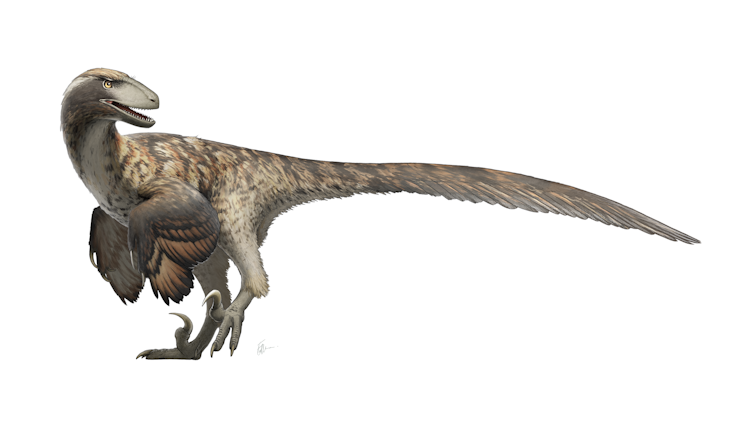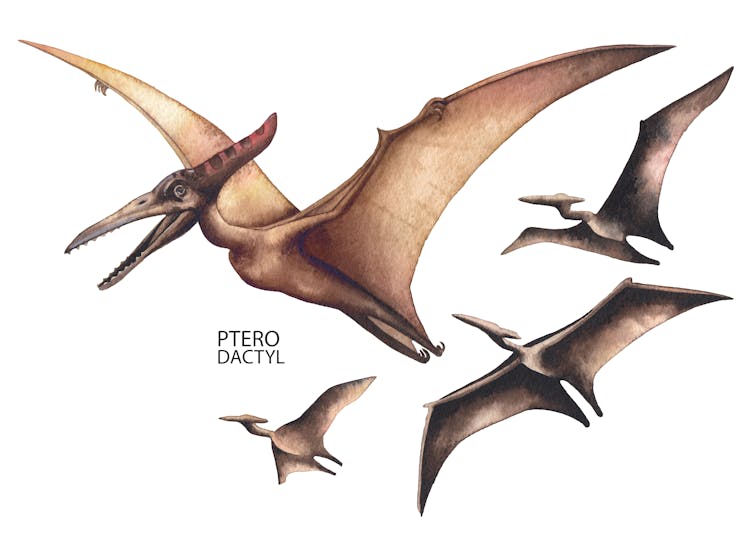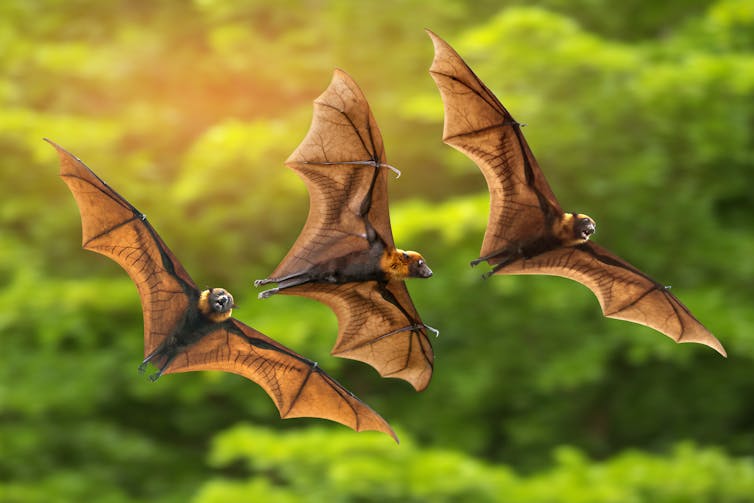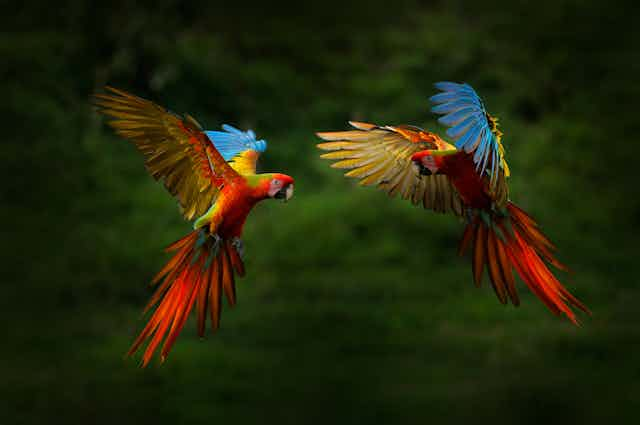How did some animals form wings to fly? – Year Five class, London, UK
Perhaps the first thing you notice when you see a bird is its amazing ability to fly. Modern birds fly using their “arms”, which have feathers and very strong flight muscles.
But the ancestors of today’s birds couldn’t fly. Birds evolved from a group of dinosaurs called theropods, which walked on the ground. They included giant meat-eaters such as Tyrannosaurs rex, as well as much smaller, fast-running dinosaurs.
The fossils of many of these small dinosaurs show that they had simple fluffy feathers, but that their arms were too small or weak to fly. Even some giant dinosaurs may have had feathers too.

So what were dinosaurs doing with their feathers if they weren’t using them to fly? We can look for clues in today’s birds. Short, fluffy feathers help modern birds to stay warm, and brightly coloured and patterned feathers can also help birds to attract a mate.
So feathers probably evolved to do jobs other than helping the dinosaurs to fly. Only much later did they evolve into the stronger, longer feathers that build a flying wing.
Into the air
At some point, the small, feathered ancestors of modern birds began to fly. One idea about how this began is that short or weak wings may have been useful for helping the animals to hop or glide from the branches of one tree to another. But we don’t have much evidence to suggest that many of these small dinosaurs were very good at climbing trees.
Another idea is that short, stubby wings might have provided running dinosaurs with a bit of extra speed if flapped fast enough, and perhaps helped to steer them when jumping after insects and other small prey.
Perhaps a better clue comes from watching today’s ground-living birds, like partridges, and young birds that haven’t yet learned to fly. If they are frightened, they will run up logs and other objects to get away from predators.
Many species of birds can run up very steep slopes or even vertical surfaces. Young birds do it by furiously flapping their wings in order to push them against the incline. Otherwise they fall or slide off. This may have been another use for the stubby wings of some small, feathered dinosaurs. These wings then gradually became more powerful and covered in feathers and were eventually used to fly.
Other animals
Of course, there are other groups of animals that evolved powered, flapping flight. The cousins of the dinosaurs were another group of reptiles called the pterosaurs or “wing lizards”.

These evolved before the earliest birds, but instead of feathers, they had a membrane of skin stretched between their fourth finger and body. Some may have been enormous, with wingspans of over 12 metres. All of these creatures were wiped out in the mass extinction of the dinosaurs, 66 million years ago.

Curious Kids is a series by The Conversation that gives children the chance to have their questions about the world answered by experts. If you have a question you’d like an expert to answer, send it to curiouskids@theconversation.com. We won’t be able to answer every question, but we’ll do our very best.
Today, bats use a similar membrane of skin to fly. But bats are mammals like us, and first appeared after the extinction of the dinosaurs. We know much less about the origin of bats, but scientists have found that they evolved as part of a large group of animals that includes cats, dogs, pangolins, horses, cows and even whales.

But the first animals to fly by flapping are very much older than birds, pterosaurs or bats, and first took to the air about 400 million years ago: insects. Unlike birds and bats, insect wings didn’t evolve from existing “arms”. Precisely how insects got their wings is something that scientists are still working out today.
When sending in questions to Curious Kids, make sure you include the asker’s first name, age and town or city. You can:
- email curiouskids@theconversation.com
- tweet us @ConversationUK with #curiouskids
- DM us on Instagram @theconversationdotcom

